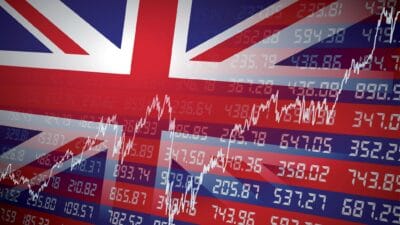On 31 March 2013, an investment of £5,000 would have bought 1,289 Rolls-Royce (LSE:RR.) shares. Today, the same number of shares is worth £5,503. However, that’s not the full picture.
During the past 10 years, they would have earned dividends of £1,468. Taking this into account, the total gain is £1,971, or 39.4%. Although a profitable investment, the FTSE 100 has performed better.
Then and now
Given such a modest return, it’s hard to believe that the company’s current stock market valuation is over four times what it was at the end of its December 2013 financial year (FY13).
In fact, the company was more profitable during FY13, than it was in FY23. In FY13, it reported an underlying profit before tax (PBT) of £1.76bn (FY23: £1.26bn).
It was also better funded at 31 December 2013, with net cash of £6.3bn on its balance sheet. Ten years later, it’s moved to a net debt position of £1.95bn.
It’s also puzzling how a company that was technically insolvent at 31 December 2023 — its assets exceeded its liabilities by £3.63bn — currently has a market-cap of £36bn.
Grounded
But the company was nearly wiped out by the pandemic. With a huge reduction in the number of flights due to international travel bans, its engines were not being used. That resulted in a massive drop in its single biggest source of revenue and the company had to raise more money to survive.
The upshot is that there are now over 6.5bn more shares in issue that at the end of FY13. This has massively impacted its earnings per share (EPS). But investors don’t appear to have noticed. They appear to be valuing the company on a par with a high-growth tech stock rather than a solid and reliable engineering company.
Underlying EPS were 65.59 in FY13, compared to 13.75p for FY23.
Analysts are forecasting an underlying PBT of £1.82bn in FY25, only marginally higher than its result 12 years earlier. But if this is achieved, EPS will be 16.5p, 75% lower than for FY13.
Rising valuation
At 31 December 2013, the company was valued at 6.7 times its annual earnings. Today, that figure has ballooned to 30.5.
By comparison, RTX, which makes Pratt & Whitney aircraft engines and is the world’s largest aerospace and defence company, currently has a market-cap equivalent to 18.9 times its adjusted 2023 earnings.
The increasing disparity between Rolls-Royce’s stock market valuation and its underlying financial performance concerns me.
And something I cannot understand it that shareholders are prepared to hold the stock without demanding a dividend to compensate for the risk. The company last returned cash to shareholders in January 2020, although analysts are expecting a modest payout (1.9p a share) to be reinstated in FY24.
Don’t get me wrong, I like Rolls-Royce. I think it has an instantly recognisable global brand, a reputation for engineering excellence and is well run. It’s bounced back strongly after the pandemic and has an order book worth over four times its FY24 revenue.
But its current lofty valuation — which I don’t understand and can’t justify — makes me think there are better opportunities elsewhere for me.







